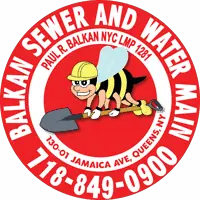Ever turn on the tap and hear a rattle like a snake warning? Or have your shower water coming out slowly? Chances are you’ve got air trapped in the pipes. Annoying, sure, but removing it is usually pretty straightforward.
In this article, we’ll chat about what causes air to sneak in there, issues it can lead to, and how to remove it yourself or call in a pro when needed.
How to Remove Air From Water Lines
1. Locate and Turn Off the Main Valve
This main water valve is typically found where the main water line comes into the house, often in a basement or utility room area. Turning the valve clockwise until it closes fully will stop the water supply so that all the pipes can completely drain and empty out. Make sure you consult your owner’s manual if you’re unsure where your main valve is or how to operate it properly to avoid any damage.
2. Open All Faucets Halfway
After shutting off the main valve, you can start opening up faucets, beginning closest to the valve itself and working your way outward. Turn both the hot and cold handles to about halfway – you don’t need full pressure, just enough flow for air to have a way to escape. Open up all the kitchen, bathroom, hose and utility sink faucets throughout the house. The goal here is to give the trapped air multiple access points to evacuate from the system.
3. Let Taps Run Dry, Then Flush Toilets
Let the open faucets run until the water sputters and fully stops, which can take 10-15 minutes or longer depending on the size of your home’s piping system. This indicates all the pipes are now drained. Once the faucets are completely dry, flush all the toilets 2-3 times as well to empty the tanks and lines since air can hide there too. Letting everything drain fully forces out even tiny stubborn pockets of air.
4. Turn Main Valve Back On
Next, with the faucets still open, turn the main valve counter-clockwise to switch the water supply back on again. Let the taps run for another 10-15 minutes once flow resumes to verify consistent pressure without any sputtering. Running all faucets for an extended period helps push out any remaining air while filling the pipes smoothly with water again.
5. Close Fixtures in Reverse Order
Finally, starting with the fixture located farthest from the main valve, begin methodically shutting off each faucet in reverse order from how you opened them. This helps shove any lingering air bubbles out towards the main line for escape. Work your way backward through the home until all taps are closed again, finishing with the kitchen and bathrooms closest to the main shut-off.
For most homeowners, draining all pipes and running the faucets for a period of time will clear out excess trapped air. But if sputtering noises and low flow persist after trying again, it likely indicates a larger underlying issue that requires a professional plumber’s expertise.
What Causes Air in Water Lines
Homeowners can easily identify signs of unwanted air in the plumbing just by using your ears. Trapped air leads to all kinds of eerie noises that basically amount to distress signals from your pipes. Listen for consistent hissing, popping, loud gurgling vibrations or thumping thuds – those all point to excess air that needs bleeding out.
Prolonged banging, hammering noises or what sounds like tap dancing in the walls are especially alarming. It’s your pipes sending out an SOS calling for help! Don’t ignore thumps, rattles or any clanging ruckus – that means it’s past time to give your plumbing some attention and get that trapped air under control.
Why is it Important to Remove Air From Water Lines?
Eventually, those air pockets put a ton of pressure on your pipes, almost like a dam blocking up the water. All that pent up force has to go somewhere, so it strains fixtures and fittings, rattling them around over time. Before you know it, joints start loosening and seals start leaking. No bueno!
You really never know when all that harmless-seeming air might go from nuisance to plumbing emergency. Don’t wait to find out the hard way! I suggest bleeding the air out at the first sign of noise or sputtering. It’s a quick DIY fix that’ll save you bigger issues down the road.
Trust me, taking care of it now keeps your pipes and faucets humming smoothly for way longer. Your plumbing will thank you! No one wants to deal with leaks, bursts or waterspouts in the kitchen.
When to Call a Professional
Call a plumber if:
- You can’t locate or turn off your main valve. Don’t attempt to mess with it!
- Loud banging noises persist after removing the air. This could indicate excess pressure requiring professional repairs.
- You notice pipe corrosion or pinhole leaks. Signs of air damage needing expert help.
So in summary, a little air buildup is normal but too much disrupts flow. Thankfully, removing it is usually straightforward. Just watch for any signs you need a pro’s help to properly address the root issue. Your pipes will be back to flowing smoothly in no time!






